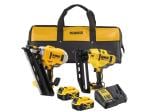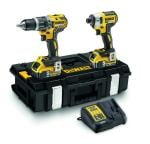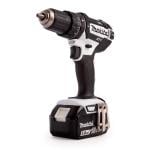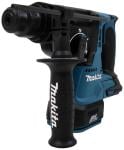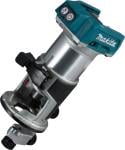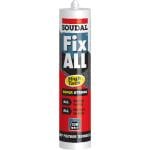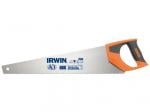The Ultimate Guide to Using Power Tools Safely
Power tools have become an indispensable part of various tasks, whether you are a professional tradesperson or a dedicated DIY enthusiast. These versatile tools provide the capability to accomplish projects efficiently and effectively. However, it is crucial to prioritize safety when working with power tools to prevent accidents and injuries. This comprehensive guide will provide valuable insights and practical tips to ensure the safe and responsible use of power tools in any setting.
Introduction
Power tool safety should never be taken lightly. Regardless of your level of experience or the scale of your project, understanding and implementing proper safety measures is of utmost importance. This guide aims to equip you with the knowledge and strategies necessary to protect yourself and others while using power tools.
Importance of Power Tool Safety
Before delving into the details, let's emphasize the significance of using power tools safely. Power tools possess immense power and potential, which can lead to severe accidents if not handled with care. The consequences of these accidents can range from minor cuts and bruises to life-altering injuries. By prioritizing safety, you not only protect yourself but also promote a culture of responsible craftsmanship.
Choosing the Right Power Tools
Selecting the appropriate power tools for your specific needs is the first step towards ensuring safety. Consider factors such as the intended application, tool specifications, and safety certifications. Research various brands and models read reviews, and consult professionals to make informed decisions. Investing in high-quality tools that meet safety standards is an investment in your well-being.
Understanding Power Tool Safety Features
Modern power tools often come equipped with a range of safety features designed to minimize the risk of accidents. Familiarize yourself with these features and understand how they work. Blade guards, safety switches, and ergonomic designs are just a few examples of safety mechanisms that can significantly reduce the likelihood of injuries. Ensure that these safety features are functional and in place before each use.
Personal Protective Equipment (PPE)
No matter how advanced the safety features of a power tool may be, personal protective equipment (PPE) remains an essential line of defence. Every time you operate a power tool, wear the appropriate PPE. This includes safety glasses or goggles to protect your eyes from debris, gloves to shield your hands, and ear defenders to reduce noise-induced hearing damage. Sturdy footwear and clothing that covers your body are also crucial.
Preparing Your Workspace
Creating a safe and well-organized workspace prevents accidents and maintains efficiency. Ensure proper lighting to clearly view your work area, reducing the chances of mistakes or mishaps. Adequate ventilation is necessary to minimize the risk of exposure to dust and fumes. Additionally, secure any loose objects and clear clutter to provide ample space for manoeuvring.
Using Power Tools Correctly
Each power tool requires specific techniques for safe and efficient operation. Read the user manual thoroughly, paying attention to instructions on posture, grip, and control. Remember to maintain a firm grip on the tool, position your body in a stable stance, and keep your fingers away from moving parts. Be aware of the potential hazards associated with each tool and adjust your technique accordingly.
Common Power Tool Hazards
Understanding common power tool hazards is crucial for effective accident prevention. One of the most prevalent hazards is kickback, which occurs when a tool's rotational force causes it to twist back towards the user. Flying debris, such as wood chips or metal shards, is another common hazard. Always anticipate and take precautions against these risks. Using appropriate safety measures and maintaining focus will significantly reduce the likelihood of accidents.
Electrical Safety
Many power tools rely on electricity, making electrical safety an essential aspect of working with these tools. Before starting any task, ensure that your workspace has access to grounded outlets. Ground fault circuit interrupters (GFCIs) should be used when working in areas where water is present. Avoid using power tools in damp conditions and always unplug them when not in use. If you are unsure about electrical safety, consult a qualified electrician.
Maintenance and Tool Inspections
Regular maintenance and inspections are crucial for keeping your power tools in optimal condition. Before each use, inspect the tools for any signs of damage or wear. Check for loose or damaged parts, frayed cords, and dull blades. Follow the manufacturer's guidelines for lubrication, cleaning, and maintenance procedures. Properly maintained tools operate more efficiently and reduce the risk of accidents.
Proper Tool Storage
Safe and secure tool storage is essential for preventing unauthorized access and protecting your tools from damage or deterioration. When not in use, store your power tools in a designated area that is clean, dry, and well-ventilated. Keep them away from children and pets and protect them from extreme temperatures and humidity. Proper storage not only prolongs the life of your tools but also prevents accidents caused by mishandling.
Handling Accidents and Emergencies
Even with the utmost caution, accidents can still occur. It is crucial to know how to respond promptly and effectively. In the event of an accident, stay calm and assess the situation. If someone is injured, administer first aid if you are trained to do so, or seek medical help immediately. Secure the area and, if necessary, contact emergency services. Taking swift and appropriate action can make a significant difference in minimizing the impact of accidents.
Training and Education
Obtaining proper training and education in power tool safety is highly recommended, especially for individuals new to using power tools. Numerous resources, including workshops, courses, and online tutorials, are available to help you gain the necessary knowledge and skills. Learning from experienced professionals not only enhances your safety but also improves the quality and efficiency of your work.
Safety Tips for Specific Power Tools
Different power tools come with their own unique hazards and safety considerations. Here are some additional tips for specific power tools commonly used: Drills:
- Always use sharp drill bits appropriate for the material you are drilling.
- Apply steady and even pressure to avoid the drill bit from getting stuck or causing the tool to slip.
Saws:
- Use a saw appropriate for the material and task at hand.
- Keep both hands on the saw and maintain control throughout the cutting process.
Sanders:
- Wear a dust mask or respirator to protect yourself from inhaling fine particles.
- Do not apply excessive pressure while sanding, as it may cause the tool to kick back.
Conclusion
In conclusion, using power tools safely is an essential responsibility that should never be overlooked. By following the guidelines and tips outlined in this ultimate guide, you can minimize the risk of accidents, injuries, and property damage. Remember to choose the right tools, understand their safety features, wear appropriate personal protective equipment, and create a safe workspace. Regular maintenance, proper tool storage, and acquiring proper training will further enhance your safety and the quality of your work. By prioritizing safety, you can fully enjoy power tools’ benefits and possibilities.
Frequently Asked Questions (FAQs)
Q: How can I choose the right power tools for my needs?
A: When selecting power tools, consider the specific tasks you'll be performing, the tool's quality and reliability, and any safety features it may have.
Q: What personal protective equipment (PPE) is necessary when using power tools?
A: Essential PPE includes safety glasses or goggles, gloves, hearing protection, and sturdy footwear. Additional equipment may be required based on the task.
Q: Are there any specific safety precautions for working with electrical power tools?
A: Yes, electrical power tools require extra caution. Ensure proper grounding, use ground fault circuit interrupters (GFCIs), and avoid exposing tools to water.
Q: How often should I inspect and maintain my power tools?
A: Regular inspections and maintenance are crucial. Follow the manufacturer's guidelines and inspect tools before each use, looking for any signs of damage or wear.
Q: What should I do in case of an accident or emergency while using power tools?
A: Stay calm and assess the situation. If needed, administer first aid, secure the area, and contact emergency services immediately if the situation requires professional assistance.


